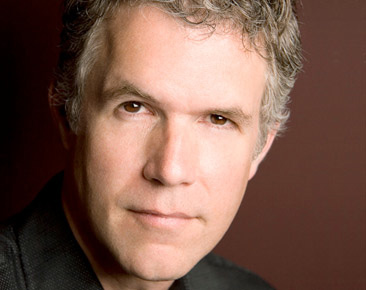
 Are bluegrass festivals successful? The answer, in 2013 (I prefer to work in the present because it’s so now-ish), is an unequivocal “yes” and “no.” It all depends on who you talk to and how you define “success.” For some, success is achieved when you lose 25% of your audience, because it means you have fewer security headaches and are no longer short of volunteers. Others define success as having reached the point at which you’re no longer losing money, and people you consider to be stars feel an obligation to buy you presents for no reason.
Are bluegrass festivals successful? The answer, in 2013 (I prefer to work in the present because it’s so now-ish), is an unequivocal “yes” and “no.” It all depends on who you talk to and how you define “success.” For some, success is achieved when you lose 25% of your audience, because it means you have fewer security headaches and are no longer short of volunteers. Others define success as having reached the point at which you’re no longer losing money, and people you consider to be stars feel an obligation to buy you presents for no reason.
While some events are growing substantially, others are shrinking faster than a Bonnaroo T-shirt in an extra-hot dryer. Festivals are naturally doing their best to deal with the tough economic times we’ve all been facing since the stock market crash of 1929. And, in this economic environment, we all have to be a little more innovative and diligent in order to grow our business.
Though I come to this issue from the point of view of a band “owner” (at least I own the P.A. system, though I’m not sure where it is at the moment), I also have run legitimate businesses in the past, and I’m involved in a new and growing “green” company that’s making instrument straps out of recycled backstage garbage, like styrofoam coffee cups, broken D-strings, forgotten digital tuners and discarded set lists. In other words, though I’m a business owner, I have no real qualifications to offer advice on the subject of event producing, but I plan to do it anyway.
Many festivals, when faced with a dwindling audience, make the mistake of trying to reach out to a new segment of the population, hoping for a larger slice of the demographic pie (I’m sorry, I’ve just been waiting years to say “demographic pie”; I promise it won’t happen again).
Many bluegrass events look out at their crowd, see a median age of 92, and start making moves to lure in a younger audience. This is an understandable impulse, but it can be very dangerous to try and bring a different kind of crowd to your event.
Likewise, some festivals that have a younger audience would at least like to bring in enough older people so there’s someone around to steer everybody to the right tents at the end of the night. This too is risky, because studies show that once your event reaches the level of three old people to every ten young ones, the young ones get scared and never come back (some are never heard from again).
I would suggest instead that festivals need to embrace the audience they have, and then take steps—even bold ones—to expand that audience.
For example, if you have an older crowd, don’t bring in jamgrass bands that will only lead to guys with no shirts and Hasidic-looking beards dancing in front of elderly people in lawn chairs, blocking their view (not that they want to see the band anyway). This will only accelerate the shrinkage of your audience and confuse people.
Instead, encourage even more older people to attend: book the same bands back every year, and insist that each band sound the same as last year (preferably working off the same set list). Keep prices the same but offer additional age-based discounts so that the older you are, the lower your admission cost is. Build shuffleboard courts, have a well-stocked game room for cards and bingo, with satellite TV that shows only the Game Show Network and the Weather Channel.
You’ll have the last laugh on everyone trying to court the same 25-40 age group that advertisers seem to believe are in possession of all the world’s disposable income. The truth is, those young whippersnappers had all the disposable income, but they spent it all on high-end beer, electronic gadgets and pedicures. They’re all in debt.
Sure, your older audience may complain a little as they leave the festival grounds to go home, but you can just smile back at them, knowing you’re successfully capturing the business of the only responsible people left in our society.
What if you have a festival that’s bringing in a younger crowd, but you’d like to expand on that success to broaden your base a little, maybe providing some long term stability for your audience? Plus, you know that older people can help provide temporary loans, so the younger ones can continue to patronize the vendors selling guitar cases made of hemp.
But, as mentioned above, you can quickly reach a critical mass of older people and the effects on your younger attendance the very next year could be chilling.
A better plan is to encourage more young people to attend. Keep your bands jammy and experimental. If you do have any bands in the more traditional mold, insist that they perform barefoot and discourage any songs under 15 minutes long. Purchase some incense that smells like marijuana and have some burning right at the front gate. Have all security people disguised as ancient Deadheads.
What if you’re the presenter of a rowdy kind of festival that’s drawing in more of a redneck/biker crowd, and you’re thinking you’d like to try to expand your audience and maybe have fewer arrests in the bargain by bringing in a more yuppy-ish element.
Here again, you’re wasting your time. The yuppies aren’t going to set foot at your festival until you’ve cleared the event entirely of people with large knives attached to their belts (and those are just the women), and Rebel flags tattooed on parts of their body no one wanted to see in the first place. This will remain true no matter how many smoothie stands you have, and whether or not you book the Seldom Scene.
What you need to do is further attract the element that has become your event’s bread and butter (and forced the state to beef up highway patrols in the area days in advance): Sprinkle the festival grounds with spent shells and empty Jim Beam bottles before anyone arrives. Book some rowdier bluegrass bands, and make sure you have one with a drummer that can do a two-hour set at midnight. Get a couple of volunteers to stage a fake knife fight right in front of the stage at 3:00 in the afternoon. Hire some semi-attractive girls and guys, cover them in mud (even if the grounds are dry that year) and have them dance near (or on) the stage. Have one or more of them pretend to pass out.
Whatever kind of audience you have at your festival, when people ask you what your long term business strategy is, you can just confidently reply, “more of the same.”




